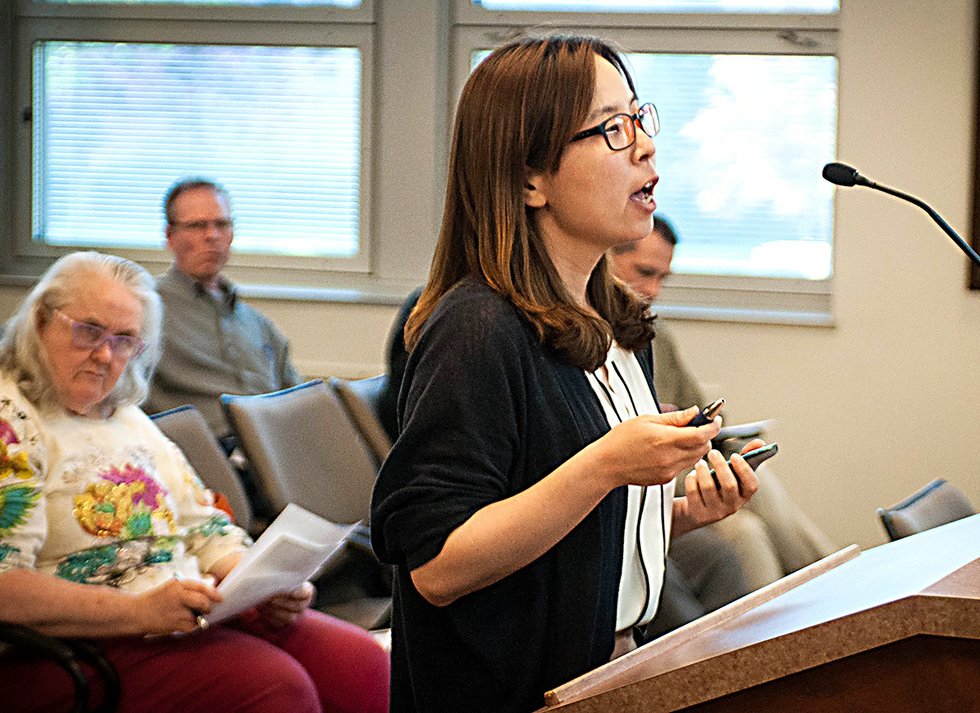(First published in the May 24, 2018 issue of City Pages)
Two state Dept. of Health specialists say dioxin levels near the Thomas Street project are below danger levels, but neighborhood residents remain unconvinced

State toxicologist Clara Jeong speaks at the public hearing last Thursday about dioxin levels in two areas near Thomas Street.
Two toxicologists from the Wisconsin Department of Health studied the neighborhood in Wausau’s Thomas Street corridor dioxin levels, singling out a residence and a park area for testing.
According to toxicologist Clara Jeong, a person could literally eat soil from the park three times per week during months when the park was not covered in snow and still have levels of dioxin far below what the state considers safe.
The information was revealed at a public hearing Thursday, May 17, the latest attempt by the city to quell unrest over the Thomas Street project, the next phase of which is slated to begin this year. During the public hearing city leaders heard testimony about dioxin levels found around the area from former industrial uses, and allowed the public to weigh in on that testimony.
The hearing didn’t seem to change anyone’s mind.
City officials cited the toxicologists’ findings as evidence that there’s no reason to delay the next phase of the Thomas Street project, which involved reconstructing and redesigning the eastern half of Thomas Street similar to the treatment the western half received last year.
“At one point the magnitude of the health risk was so inflamed with communication and miscommunication, but we find out people are likely exposed to more dioxins in the food they eat,” said city council president Lisa Rasmussen. “If we comply with DNR regulations, we could be pragmatic in our approach and still get the job done.”
Residents speaking at the hearing, many who reside on or near Thomas Street, took issue with the toxicologists’ study, criticizing its small sample size, failure to take into account the base amount of dioxins people take in on a daily basis in evaluating safety levels, and lack of information about the long-term effects of dioxin exposure on people’s health. City council member Mary Thao requested staff bring that kind of data to the city council before the it gives the final go-ahead to the project.
But many residents’ concerns weren’t just about the Thomas Street project, but the fact that pollution exists at all. A culvert in the park near Thomas Street was found to have much higher levels of dioxins than the surrounding area. As of yet, there is no barrier to keep people away from the culvert.
“I don’t care about the Thomas Street project,” Catherine Kronenwetter said at the meeting. “I care that some of these levels have gone up, not down. Are we just going to leave this culvert here while we figure something out? That’s my concern.”




